Can You Handle It?
"You're going to sink the company."
These words echoed repeatedly in my head after I pitched the first Animal ad concept to senior leadership. Though I put a lot of effort into the project, I understood the concerns, a part of which flowed from my lack of experience. I was the new kid on the block who really didn't know the company or the industry. Furthermore, I had no marketing background. Even so, I had conviction and passion. But that wouldn't be enough. To this day, things could have turned out very differently had I not had the support of my boss. He told me to do what I think was right and that he'd calm the ruffled feathers as best he could. So I placed the very first ad for the nascent brand, as shown below... And I hoped for the best.
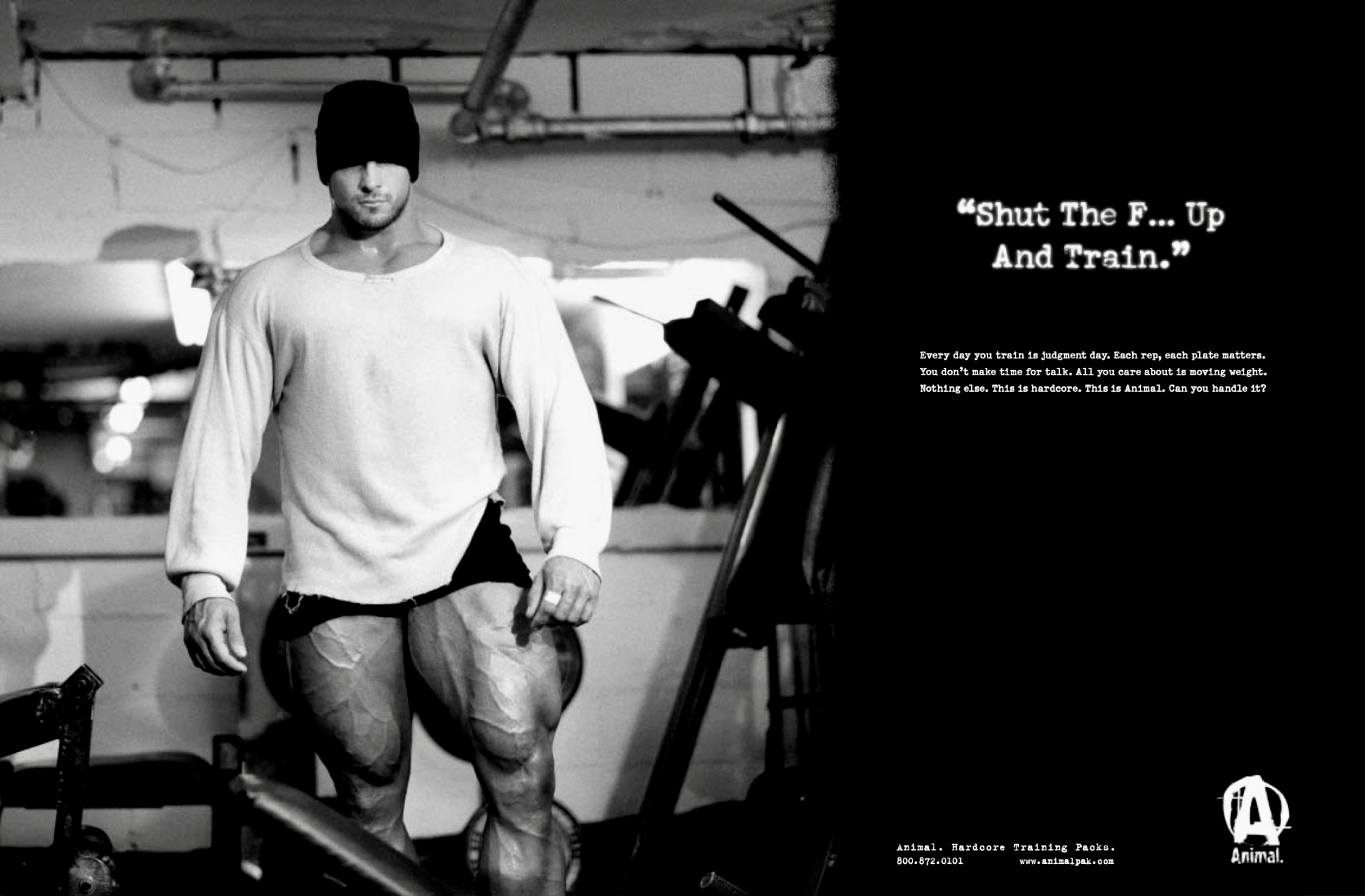
Asking questions is more important than arriving at answers. Further, some questions weigh more than others. When I started working on the first rough sketches, I had a clear idea about what I wanted the ads to do–each would be a vignette that captured a mindset and conveyed a mood. Answering the why question first was more important as I knew the what would naturally flow from there. To this day, I've used this basic approach of asking a set of questions when trying to come up with a solution to a problem. In addition to ads, it also helped me conceptualize our future expo booth.
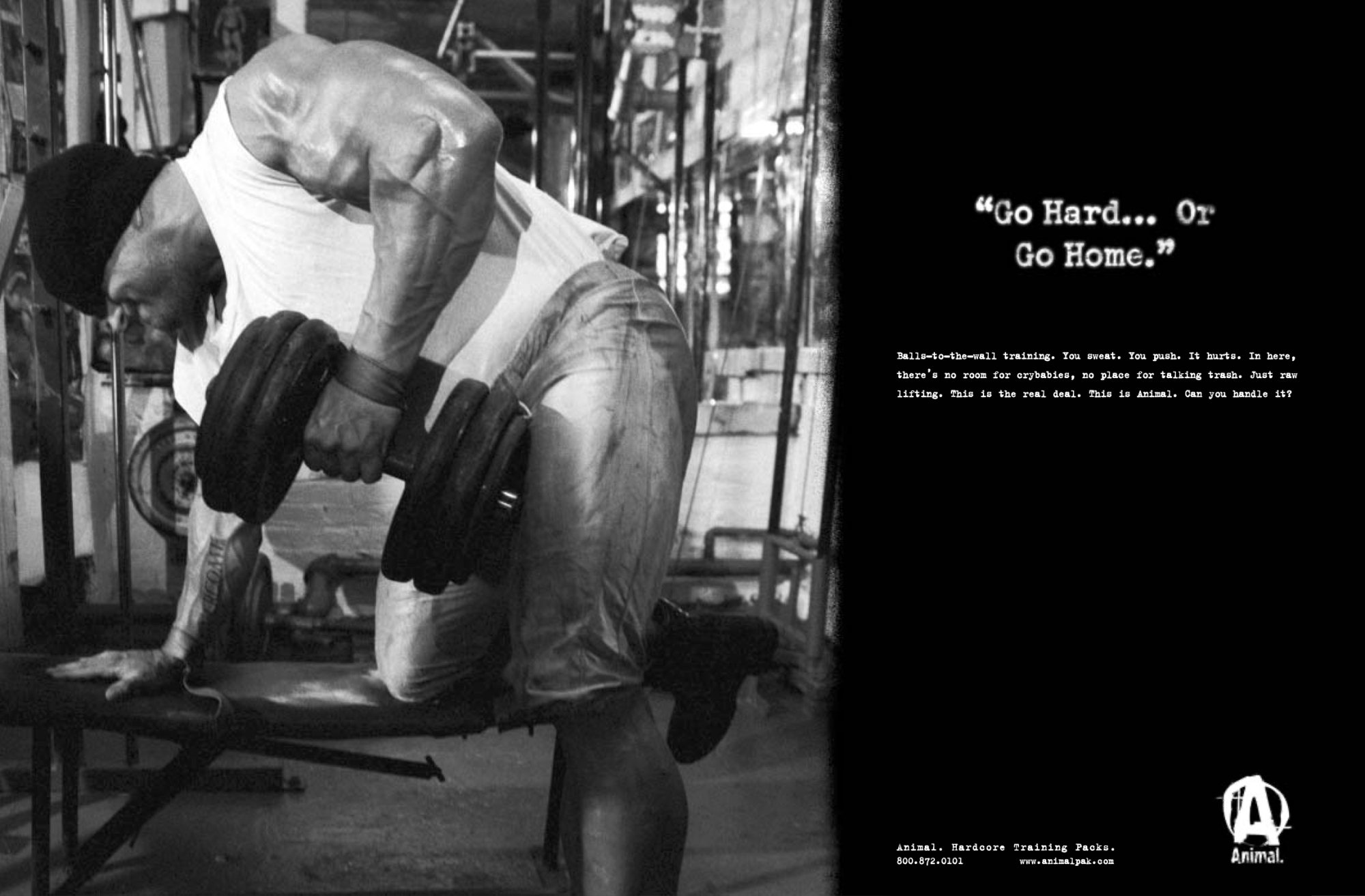
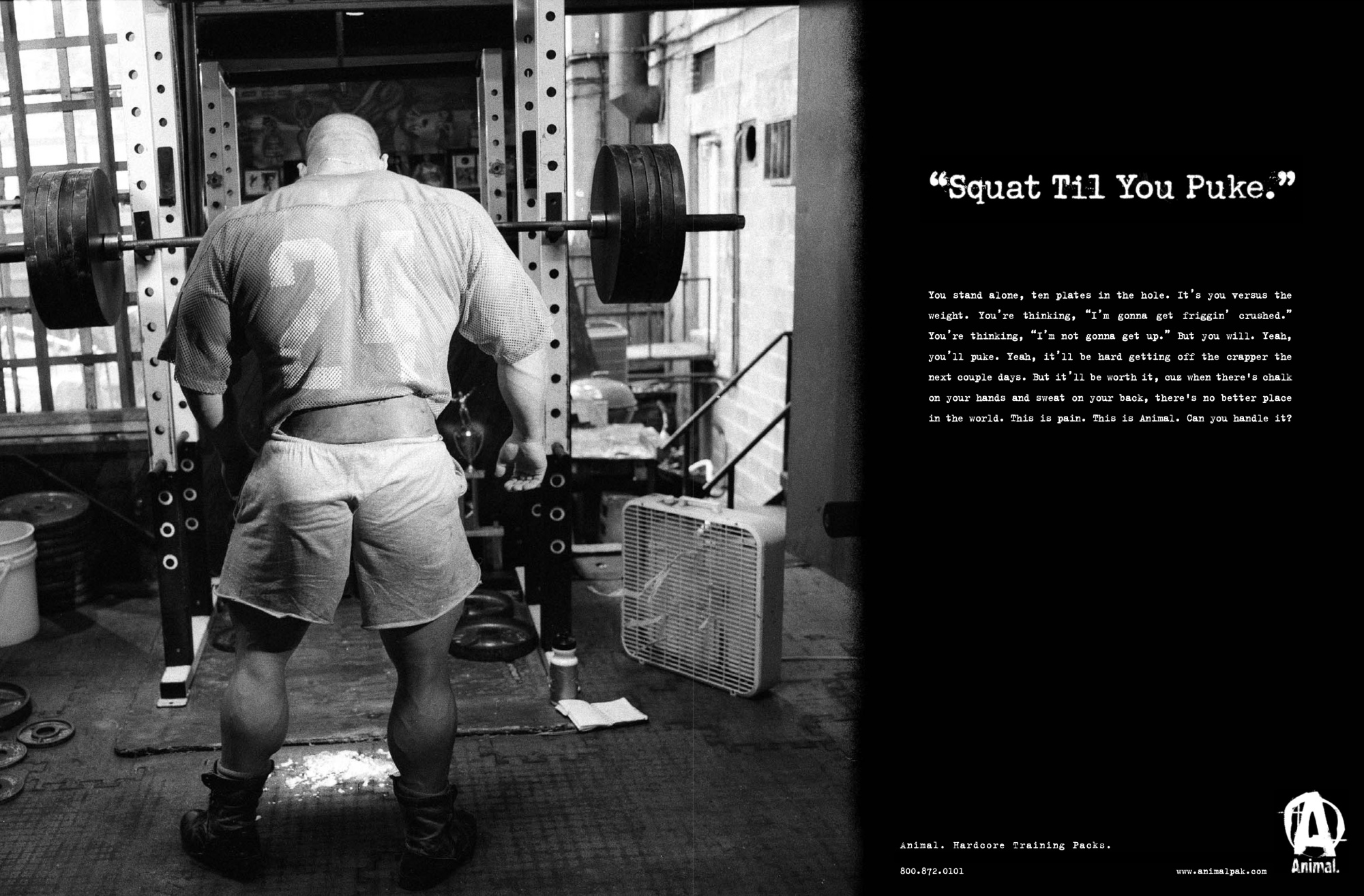
As with the others in the series, I wanted to capture an authentic vibe without sensationalism or excess. The "Squat Til You Puke" ad above is a good example of that. Incidentally, everything about creating this campaign was immensely engaging. We had a lot of fun. Yes, that is "puke" on the floor and yes, this is a fairly common occurrence among the most dedicated strength athletes on "leg day." We had fun trying to re-create puke with various ingredients we brought to the shoot.
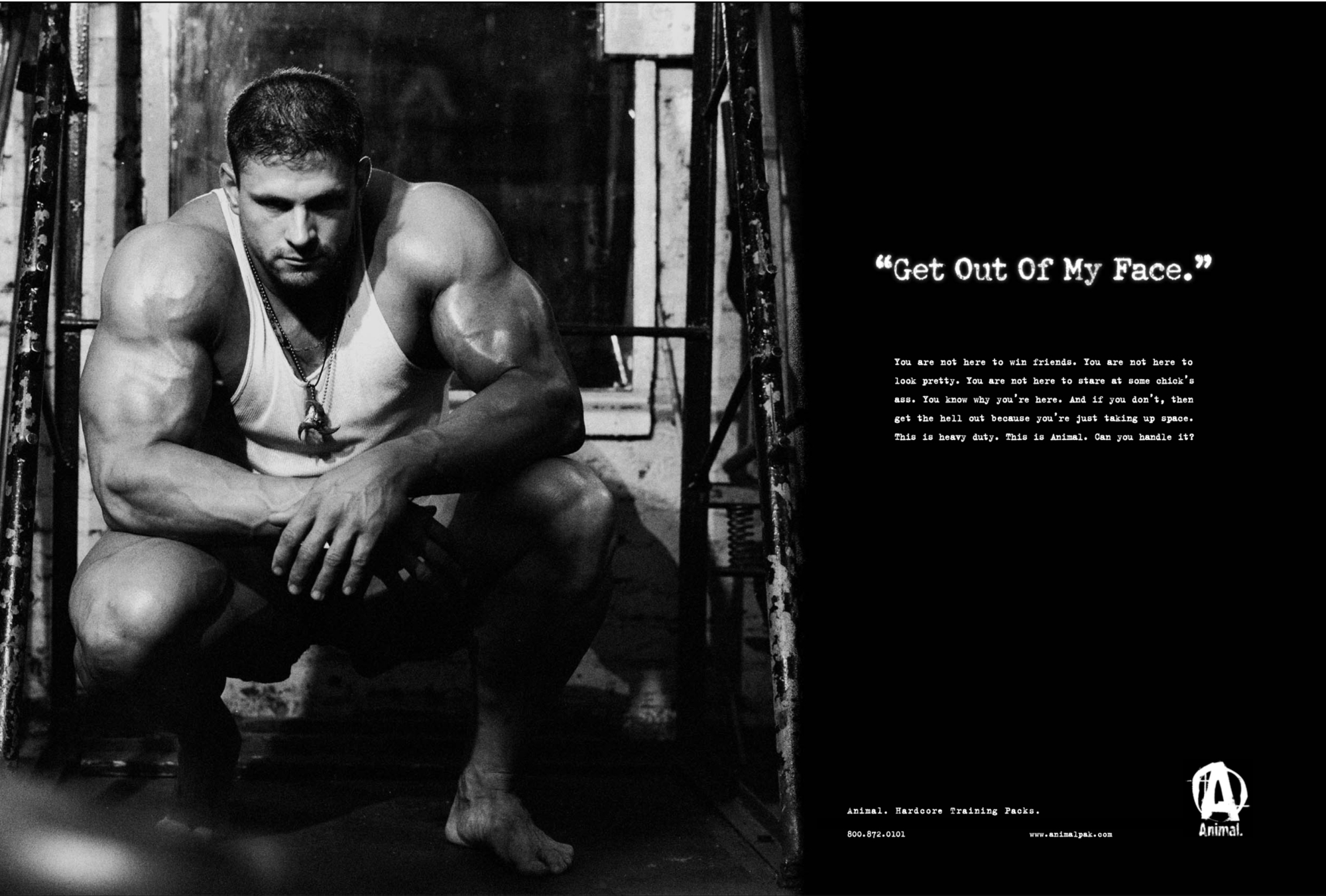
Though we photographed several different athletes, the primary one was a relatively unknown local amateur bodybuilder named Andy (see above). When it came to the brand and our sponsored athletes, I always preferred nicknames (whether given by us or inherited from the athlete). So instead of Andy, we went with his nickname, "Machine." As both a writer and academic, I acutely knew the power of words. Rather than pedestrian terms like "forum" or "expo booth," I chose specific names like The FORVM and The Cage. Unique names can help create a Brotherhood (community); it gives the fan a special connection, a secret access to the brand as an insider.
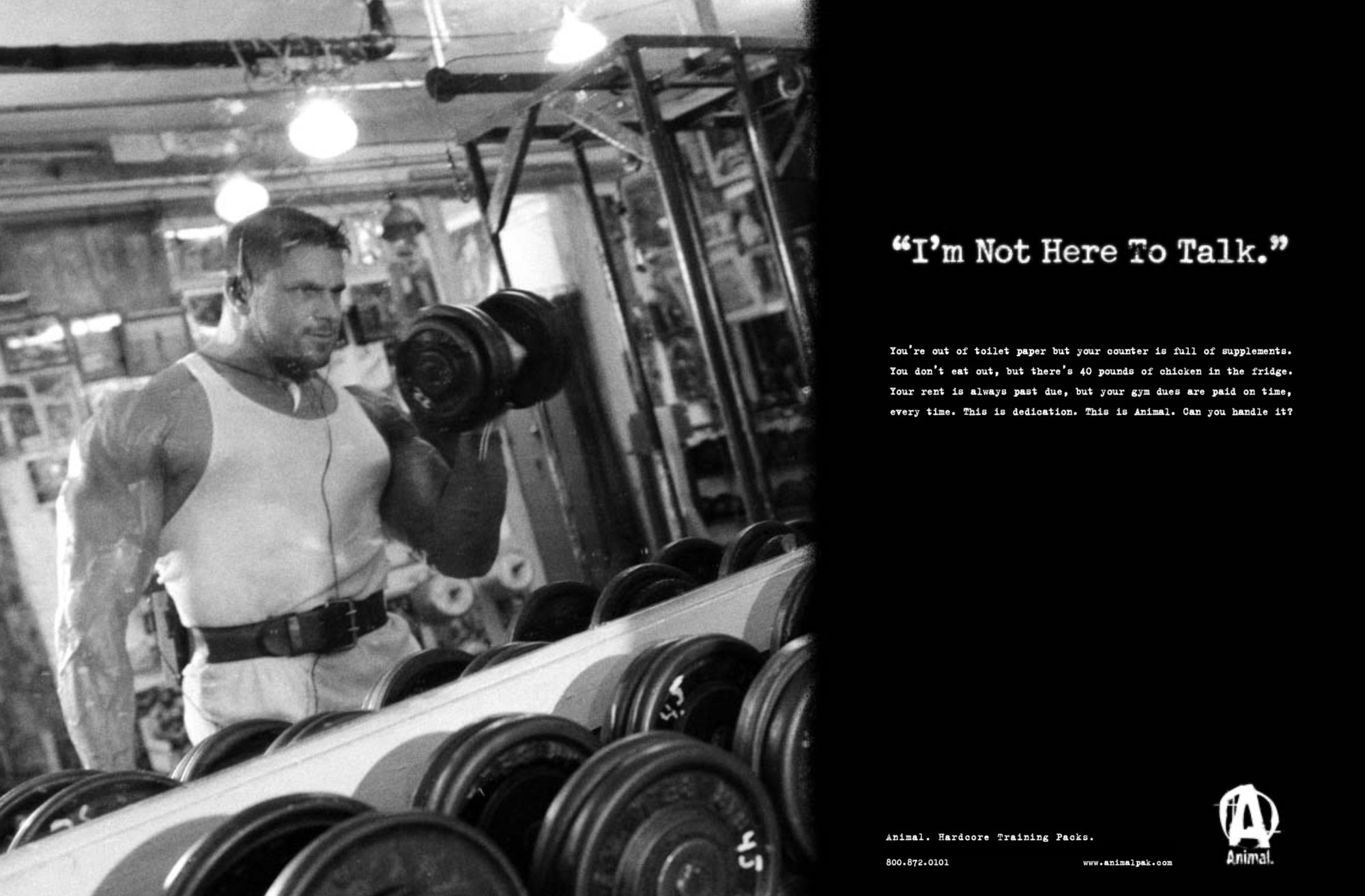
• • •
NOTE: The campaign was moving forward with great success. We were very fortunate to win the prestigous BBCOM award for "Best Ads." Having said that, the ad campaign was not a complete success according to some within the company. We did get blowback. It was surprising just how many calls and emails we got, complaining about the offensiveness of the ads (keep in mind that in one version of the ad that went to print, the copy included the word "fuck"). Some customers even went as far as to tell us we lost them as customers. I won’t lie though. I secretly enjoyed hearing about the critical feedback. The more we got, the better I thought. The ads were generating controversy, and for the first time, people were actually talking about us and the brand. Jonah Berger at the Wharton School talks about controversy and the power of high arousal emotions in generating WOM or word-of-mouth. He was right.